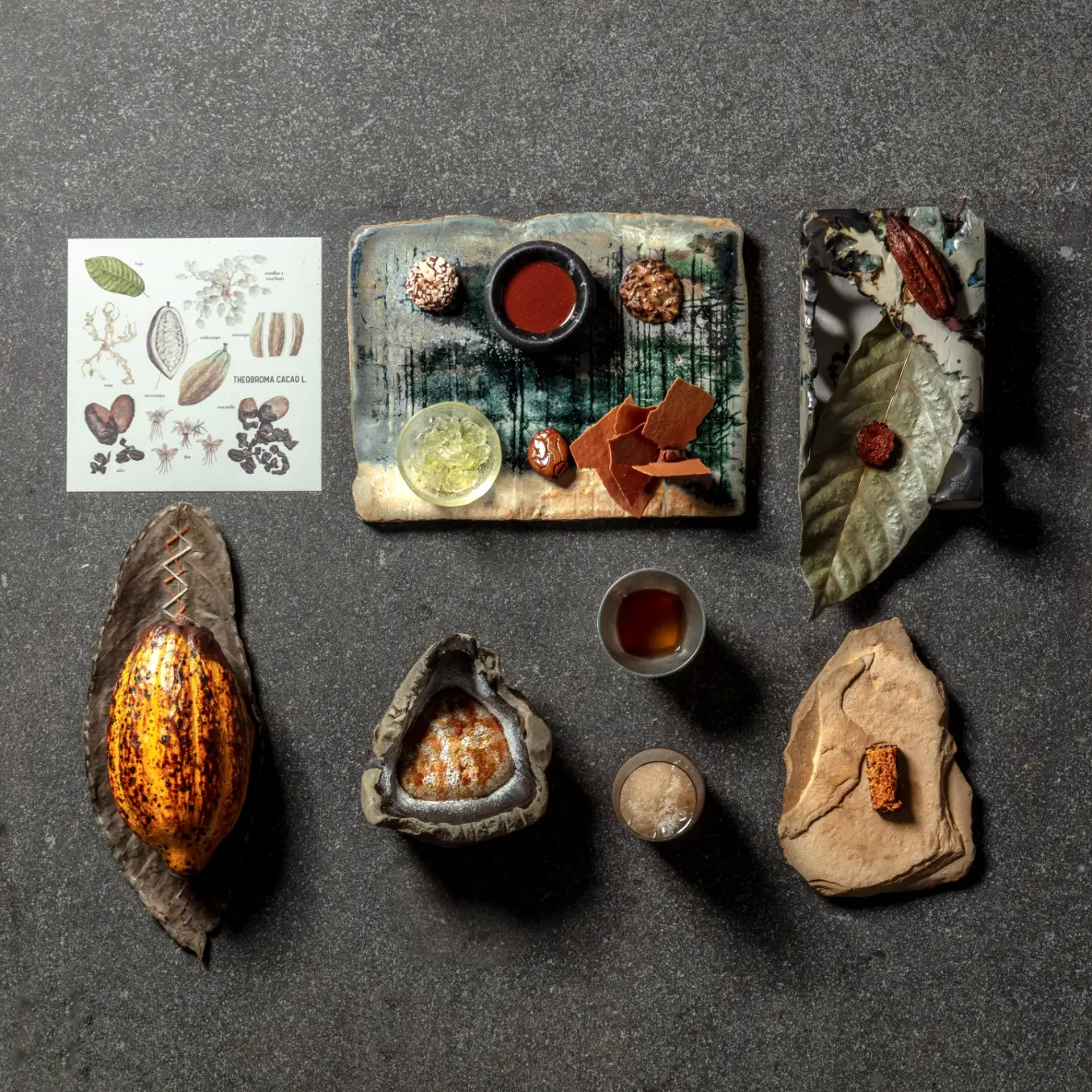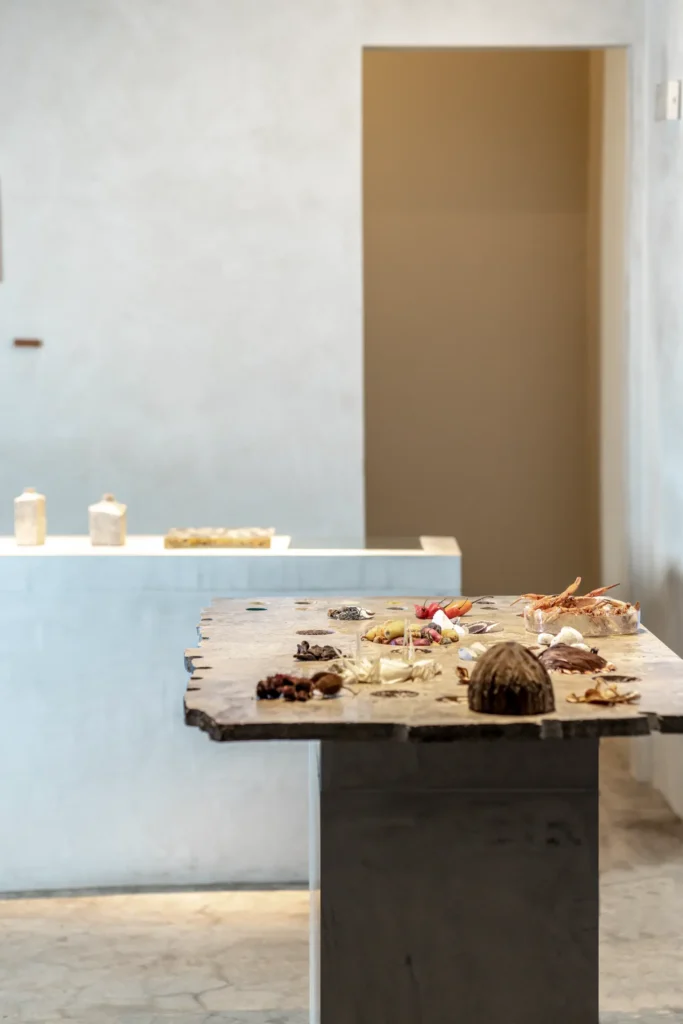South America Cities, Food & Wine
Eat your way through the landscapes of Peru at this award-winning restaurant

Cacao Chuncho at Central Restaurant, Peru | Credit: Gustavo Vivanco
Taking out the monumental title of World’s Best Restaurant in 2023, Central in Peru is flying high – fitting for a restaurant dedicated to the culinary exploration of different altitudes
If you haven’t eaten Peruvian cuisine before, it might be a good idea to hold off until you visit the country’s capital of Lima, where, in the Barranco district, you won’t just find a restaurant serving the best food in South America – but possibly the best food in the world. Central Restaurant took out the No. 1 ranking in the ultra-competitive The World’s 50 Best Restaurants list in 2023, firmly placing it at the top of many an in-the-know gourmand’s dining wish list.
The brainchild of chef Virgilio Martínez, Central first appeared on The World’s 50 Best Restaurants list in 2013, just scraping in at No.50. But three more years is all it took for Martinez’ restaurant to jump up to the top five, where it remained for seven years before taking the top honours in 2023. And it’s no wonder. Central’s culinary philosophy is distinct and unique, with dishes that not only please the palate but also take the diner on a fascinating foraging journey through the diverse landscapes of Peru.


Central’s 10-course tasting menu is a showcase of Peruvian biodiversity, rooted in the exploration of Peru’s unique geographical and cultural identity. “[The menu] speaks about unique places, and the people living in these unique landscapes,” says Martínez. Each dish showcases a particular ecosystem found at a specific altitude in Peru, from 15 metres below sea level in the Pacific Ocean to the 4000-metre-high peaks of the Andes. Little-known Indigenous ingredients from each region and elevation shine in every dish, with names that either literally or whimsically reflect their origin: Desert Plants, Spider on a Rock, Close Fishing, Low Andes Mountains, Amazonian Rainforest and Green Highlands. As the diner begins to taste their way through the menu, they embark on an epicurean adventure along Peru’s coast, through the jungle and over the mountains.
Surprising and delicious native Peruvian ingredients take pride of place on each plate at Central, and cooking with clay is of particular importance. “[We cook] with the same soil from the farms where we harvest … we use medicinal plants as well as vegetable roots, and tubers are becoming quite special,” Martínez explains. “We [have] worked hard to make these unfamiliar ingredients, such as chaco clay or maca root, as familiar in the restaurant as they were in their habitat.”

Full circle
Defining and refining Central’s award-winning food philosophy was a collaboration between Martinez and Central co-founder and life partner, Pia León. When it opened in 2008, the restaurant initially served a globally-influenced menu – a result of Martinez’ many years working in kitchens abroad – designed to introduce Peruvians to flavours they had almost certainly never tasted before. But when Le Cordon Bleu-trained León joined Central, this quickly changed. “I discovered that I wasn’t happy with keeping an idea, a concept, a narrative that was about the world abroad,” Martinez explains. “I realised that it had to be about my territory, my roots, my identity, my reality, my space. So, then we considered speaking about the natural ecosystems of Peru, and South America.”
Moving beyond global narratives, Martinez and León designed a menu that emphasised the significance of their own territory, roots, and identity, encompassing Peru’s Ancestral wisdom, agriculture, and the profound relationship Peruvians have with food. “This is Peru, where we have gastronomy as one of our biggest points of pride, where culture and our identity are the highlights,” says Martínez.


A global celebration
Peruvian food has become increasingly popular in the last decade, as more and more people become familiar with the country’s diverse, flavourful cuisine, made with ingredients sourced from the Pacific coast, the Andes and the Amazon. Its influences hail from Europe (Spanish cuisine and Italian cuisine), Asia (Chinese cuisine and Japanese cuisine), and Africa (Maghrebi cuisine and West African cuisine), the result of 500 years of migration to the country.
In Central, you find Peru from dense glaciers and rugged peaks, through green forests and meandering rivers, barren desert and colourful valleys to the infinite blue of the ocean melting into the horizon.
Perhaps the most influential advocate of Peruvian cuisine over the last two decades is Nobu Matsuhisa who, in partnership with Hollywood star Robert DeNiro, has catapulted Japanese-Peruvian cuisine into the culinary lexicon with a string of 40+ Nobu restaurants and hotels around the world. But Peruvian food is also heavily influenced by the country’s indigenous and ethnic groups, including the Inca and pre-Inca populations and, because of this legacy, Martinez says Peruvian food goes far beyond fusion: “We highly respect fusion, as something that happened and is happening, but I think we should think beyond that. It’s only one small component of a very complex cuisine,” he says. “Peruvian cuisine is all about all these good ingredients, and the methods of preservation, fermentation, and other ancestral processes. Our cultures and ethnic groups had different ways to express our knowledge through food. That’s why you see food in Peru becoming a craft, art, becoming wellness. Peruvian food is about happiness.”
With Central’s focus on Indigenous ingredients, it comes as no surprise that sustainability is a high priority for Martinez and León. “We think being sustainable is being honest,” he states. “We want to speak the truth about food.” For them, this means committing to Peru’s roots, ancestral knowledge and wisdom, and digging deep into the origins of Peru’s relationship with food and agriculture. “We consider this philosophy a huge movement. We are pretty ambitious about this, and we have no fear of saying it.”




Global ambassadors
In recent years, Martínez and León have become global ambassadors of Peruvian flavours with openings including Mil, high up in the Peruvian Andes near Cusco, and MAZ in Tokyo. Each venue combines Peruvian and local produce.
Mater Matter
Founded in 2013 by Virgilio and his sister, Malena, Mater started as a scientific research centre aimed at investigating Peru’s biodiversity and ecosystems to enhance the gastronomic concept of Central. Over the years, Mater has transformed into an interdisciplinary organisation, broadening its projects to involve agronomists, biologists, anthropologists and artists.
Latest Articles
Don't miss the latest from Luxury Travel
